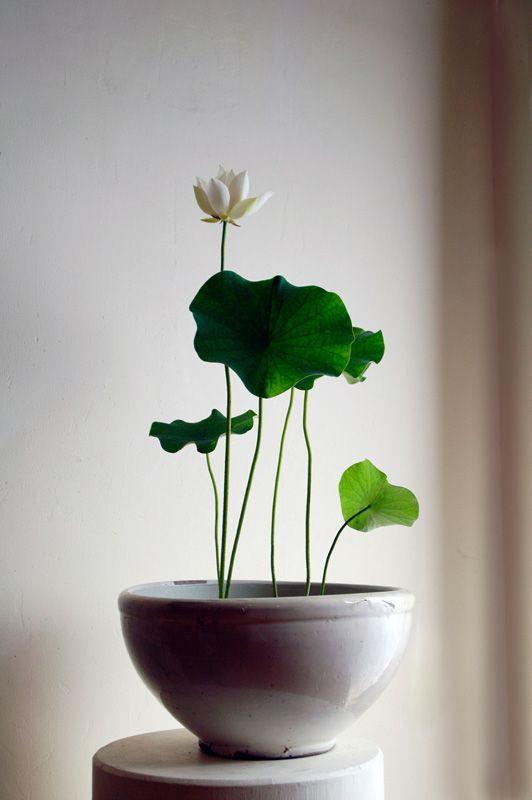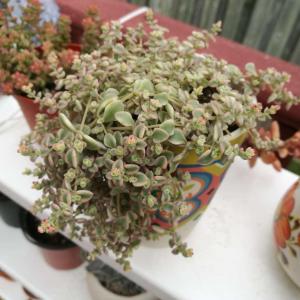文章
Dummer. ゛☀
2017年07月11日

Family - Scrophulariaceae
Stems - No info yet.
Leaves - No info yet.
Inflorescence - No info yet.
Flowers - No info yet.
Flowering - May - October.
Habitat - Muddy borders of ponds and lakes, in wet soils of a variety of habitats.
Origin - Native to U.S.
Other info. - This little plant can be found throughout much of Missouri but is absent from much of the prairie region of the state and also in the northwest corner of the state. The plant can be identified by its viscid pubescent stems, small whitish flowers, thin leaves, and habitat. The long, thin pedicels of the flower are also a good characteristic for identification.
Stems - No info yet.

Leaves - No info yet.
Inflorescence - No info yet.
Flowers - No info yet.

Flowering - May - October.
Habitat - Muddy borders of ponds and lakes, in wet soils of a variety of habitats.
Origin - Native to U.S.
Other info. - This little plant can be found throughout much of Missouri but is absent from much of the prairie region of the state and also in the northwest corner of the state. The plant can be identified by its viscid pubescent stems, small whitish flowers, thin leaves, and habitat. The long, thin pedicels of the flower are also a good characteristic for identification.
0
0
文章
Dummer. ゛☀
2017年07月11日

Family - Asteraceae
Stems - No info. yet.
Leaves - No info. yet.
Inflorescence - No info. yet.
Involucre - No info. yet.
Ray flowers - No info. yet.
Disk flowers - No info. yet.
Flowering - May - November.
Habitat - Waste ground, cultivated areas, roadsides.
Origin - Native to Central and South America.
Other info. - This weedy little species can be found scattered throughout Missouri. The plant can be identified by its small flowers, opposite leaves, and hairy stems. It commonly shows up in flower beds and in cultivated fields.
This species is edible.
Stems - No info. yet.

Leaves - No info. yet.
Inflorescence - No info. yet.
Involucre - No info. yet.

Ray flowers - No info. yet.
Disk flowers - No info. yet.
Flowering - May - November.
Habitat - Waste ground, cultivated areas, roadsides.
Origin - Native to Central and South America.
Other info. - This weedy little species can be found scattered throughout Missouri. The plant can be identified by its small flowers, opposite leaves, and hairy stems. It commonly shows up in flower beds and in cultivated fields.
This species is edible.
0
0
文章
Dummer. ゛☀
2017年07月11日

Family - Rubiaceae
Stems - No info. yet.
Leaves - No info. yet.
Inflorescence - No info. yet.
Flowers - No info. yet.
Flowering - May - September.
Habitat - Rich soils, moist woods, low open ground, along streams and spring branches, moist ledges, wet meadows, base of bluffs.
Origin - Native to U.S.
Other info. - This species can be found throughout Missouri. The plant can be identified by its whorl of 6 oblong-elliptic leaves per node, its small white flowers, and its sweet scent when crushed. G. triflorum can form large mats when left undisturbed.
The plant can be boiled and made into an aromatic tea. It can also be used to flavor wine.
Stems - No info. yet.
Leaves - No info. yet.
Inflorescence - No info. yet.
Flowers - No info. yet.

Flowering - May - September.
Habitat - Rich soils, moist woods, low open ground, along streams and spring branches, moist ledges, wet meadows, base of bluffs.
Origin - Native to U.S.
Other info. - This species can be found throughout Missouri. The plant can be identified by its whorl of 6 oblong-elliptic leaves per node, its small white flowers, and its sweet scent when crushed. G. triflorum can form large mats when left undisturbed.
The plant can be boiled and made into an aromatic tea. It can also be used to flavor wine.

0
0
文章
Dummer. ゛☀
2017年07月11日

Family - Rubiaceae
Stems - No info. yet.
Leaves - No info. yet.
Inflorescence - No info. yet.
Flowers - No info. yet.


Flowering - May - July.
Habitat - Rich or rocky wooded slopes, bluffs, thickets.
Origin - Native to U.S.
Other info. - This species can be found throughout Missouri. The plant is fairly easy to identify because of its four ovate-lanceolate leaves, small white flowers, and bristled fruits. The plant is very common in the habitats mentioned above. Another species, G. pilosum Ait., is similar but has elliptic leaves and reddish-purple flowers.
Stems - No info. yet.
Leaves - No info. yet.
Inflorescence - No info. yet.
Flowers - No info. yet.


Flowering - May - July.
Habitat - Rich or rocky wooded slopes, bluffs, thickets.
Origin - Native to U.S.
Other info. - This species can be found throughout Missouri. The plant is fairly easy to identify because of its four ovate-lanceolate leaves, small white flowers, and bristled fruits. The plant is very common in the habitats mentioned above. Another species, G. pilosum Ait., is similar but has elliptic leaves and reddish-purple flowers.
0
0
文章
Dummer. ゛☀
2017年07月11日

Family - Asclepiadaceae
Stems - No info. yet.

Inflorescence - No info. yet.

Flowers - No info. yet.
Flowering - May - July.
Habitat - Dry or rocky woods, sandy open ground, ravine bottoms, low woods, slopes, ridges, roadsides.
Origin - Native to U.S.
Other info. - This striking species of milkweed can be found in just the extreme southeastern corner of Missouri. The plant is simple to identify in the field because of its big full umbels of white flowers.
Like most of the milkweeds, the plant will bleed a thick white sap if injured. This sap can be irritating to some people and can be toxic if ingested. Despite this, milkweeds make excellent garden specimens and are simple to grow. The native species take NO care once established.
Stems - No info. yet.

Inflorescence - No info. yet.

Flowers - No info. yet.
Flowering - May - July.
Habitat - Dry or rocky woods, sandy open ground, ravine bottoms, low woods, slopes, ridges, roadsides.
Origin - Native to U.S.
Other info. - This striking species of milkweed can be found in just the extreme southeastern corner of Missouri. The plant is simple to identify in the field because of its big full umbels of white flowers.
Like most of the milkweeds, the plant will bleed a thick white sap if injured. This sap can be irritating to some people and can be toxic if ingested. Despite this, milkweeds make excellent garden specimens and are simple to grow. The native species take NO care once established.
2
0
文章
Dummer. ゛☀
2017年07月11日

Family - Lamiaceae
Stems - No info. yet.
Leaves - No info. yet.Inflorescence - No info. yet.
Flowers - No info. yet.
Flowering - June - September.
Habitat - Waste ground, disturbed sites, low woods, railroads.
Origin - Native to Eurasia.
Other info. - This species is still fairly rare in Missouri but its range is expanding. At the time of Steyermark's book it had only been collected in one location. The plant is an aggressive weed but is nice to look at. The flowers of G. tetrahit are typically some shade of pink but, as you can see, they can be all white also.
The genus name "Galeopsis means "looks like a weasel" (early botanists thought that is what the corolla resembled), and the species epithet means "four-parted", probably for the ovary of the plant.
Stems - No info. yet.
Leaves - No info. yet.Inflorescence - No info. yet.
Flowers - No info. yet.

Flowering - June - September.
Habitat - Waste ground, disturbed sites, low woods, railroads.
Origin - Native to Eurasia.
Other info. - This species is still fairly rare in Missouri but its range is expanding. At the time of Steyermark's book it had only been collected in one location. The plant is an aggressive weed but is nice to look at. The flowers of G. tetrahit are typically some shade of pink but, as you can see, they can be all white also.
The genus name "Galeopsis means "looks like a weasel" (early botanists thought that is what the corolla resembled), and the species epithet means "four-parted", probably for the ovary of the plant.
0
0
文章
Dummer. ゛☀
2017年07月11日

Family - Asteraceae
Stems - No info. yet.
Leaves - No info. yet.
fascicled smaller leaves.
Inflorescence - No info. yet.
Involucre - No info. yet.

Ray flowers - Absent.
Disk flowers - No info. yet.
Flowering - August - November.
Habitat - Dry open ground surrounding upland sinkhole ponds.
Origin - Native to U.S.
Other info. - This showy species is rare in Missouri, being found in only one or two counties in the Ozarks. This species is common in the Coastal Plain of the eastern U.S. but is a glacial relict in out area. Missouri is an interesting state in the fact that it has many of these glacial relicts as part of its flora.
Another rare species, E. cuneifolium Willd. is similar but this plant lacks the fascicles of small leaves in its nodes and has broader leaves. E. hyssopifolium also has bigger, brighter flowers.
Stems - No info. yet.
Leaves - No info. yet.

fascicled smaller leaves.
Inflorescence - No info. yet.
Involucre - No info. yet.

Ray flowers - Absent.
Disk flowers - No info. yet.
Flowering - August - November.
Habitat - Dry open ground surrounding upland sinkhole ponds.
Origin - Native to U.S.
Other info. - This showy species is rare in Missouri, being found in only one or two counties in the Ozarks. This species is common in the Coastal Plain of the eastern U.S. but is a glacial relict in out area. Missouri is an interesting state in the fact that it has many of these glacial relicts as part of its flora.
Another rare species, E. cuneifolium Willd. is similar but this plant lacks the fascicles of small leaves in its nodes and has broader leaves. E. hyssopifolium also has bigger, brighter flowers.
0
0
文章
Dummer. ゛☀
2017年07月11日

Family - Caryophyllaceae
Stems - No info. yet.

Leaves - No info. yet.
Inflorescence - No info. yet.
Flowers - No info. yet.

Flowering - May - July.
Habitat - Bluffs, ledges, rocky glades. On limestone.
Origin - Native to U.S.
Other info. - This is a characteristic limestone bluff species. It grows in some of the most inaccessible locations of any plant in the state. The plant has a long tough root that enables in to grow in cracks and holes in limestone.
A. stricta is definitely the most showy species of the genus in Missouri and is a plant worthy of cultivation. It may be difficult to grow, however, given its chosen habitat in the wild.
This is an easy species to ID in the field because of its linear leaves, big white flowers, and habitat.
Stems - No info. yet.

Leaves - No info. yet.
Inflorescence - No info. yet.
Flowers - No info. yet.

Flowering - May - July.
Habitat - Bluffs, ledges, rocky glades. On limestone.
Origin - Native to U.S.
Other info. - This is a characteristic limestone bluff species. It grows in some of the most inaccessible locations of any plant in the state. The plant has a long tough root that enables in to grow in cracks and holes in limestone.
A. stricta is definitely the most showy species of the genus in Missouri and is a plant worthy of cultivation. It may be difficult to grow, however, given its chosen habitat in the wild.
This is an easy species to ID in the field because of its linear leaves, big white flowers, and habitat.
1
0
文章
Dummer. ゛☀
2017年07月11日

Family - Scrophulariaceae
Stems - No info. yet.

Leaves - No info. yet.
Inflorescence - No info. yet.
Flowers - No info. yet.

Flowering - July - October.
Habitat - Wet ground.
Origin - Native to U.S.
Other info. - This striking species can be found scattered throughout Missouri. The plant grows well from seed and would do well in in cultivation as a pond margin plant.
C. glabra is a very variable plant. The leaves may be pubescent or not and have many different shapes. The corollas can range from green to pinkish or white. Steyermark lists several different forms and varieties depending on the factors mentioned above but I won't go into those here.
Stems - No info. yet.

Leaves - No info. yet.
Inflorescence - No info. yet.
Flowers - No info. yet.

Flowering - July - October.
Habitat - Wet ground.
Origin - Native to U.S.
Other info. - This striking species can be found scattered throughout Missouri. The plant grows well from seed and would do well in in cultivation as a pond margin plant.
C. glabra is a very variable plant. The leaves may be pubescent or not and have many different shapes. The corollas can range from green to pinkish or white. Steyermark lists several different forms and varieties depending on the factors mentioned above but I won't go into those here.
0
0
文章
Dummer. ゛☀
2017年07月11日

Family - Cabombaceae
Stems - No info yet.
Leaves - No info yet.

Inflorescence - No info yet.
Flowers - No info yet.

Flowering - May - September.
Habitat - Swamps, sloughs, ponds.
Origin - Native to U.S.
Other info. - This attractive aquatic species can be found in just a few eastern Missouri counties. The plant can be identified by its finely divided, opposite submerged leaves (the emergent leaves are subulate and alternate) and its small white flowers. The sepals and petals of the flower are similar and have small, curled auricles at their bases. The flowers typically have 6 stamens but occasionally have only 3.
C. caroliniana provides good cover for fish and pond-life and is commonly grown as an ornamental for aquarium use.
Stems - No info yet.
Leaves - No info yet.

Inflorescence - No info yet.
Flowers - No info yet.

Flowering - May - September.
Habitat - Swamps, sloughs, ponds.
Origin - Native to U.S.
Other info. - This attractive aquatic species can be found in just a few eastern Missouri counties. The plant can be identified by its finely divided, opposite submerged leaves (the emergent leaves are subulate and alternate) and its small white flowers. The sepals and petals of the flower are similar and have small, curled auricles at their bases. The flowers typically have 6 stamens but occasionally have only 3.
C. caroliniana provides good cover for fish and pond-life and is commonly grown as an ornamental for aquarium use.
0
0
文章
Dummer. ゛☀
2017年07月11日

Family - Scrophulariaceae
Stems - No info yet.

Leaves - No info yet.

Inflorescence - No info yet.
Flowers - No info yet.
Flowering - May - September.
Habitat - slow streams, lake and pond margins, swamps, ditches, sloughs.
Origin - Native to U.S.
Other info. - This species can be found scattered throughout most of Missouri. The plant is easy to identify becasue of its habitat, hairy stems, and opposite, round leaves. The plant can grow in submerged in water or at the water's edge. Submerged plant have a much more elongate appearance than those growing primarily on land.
The tender stems and leaves of this species are eaten by wildlife.
Stems - No info yet.

Leaves - No info yet.

Inflorescence - No info yet.
Flowers - No info yet.
Flowering - May - September.
Habitat - slow streams, lake and pond margins, swamps, ditches, sloughs.
Origin - Native to U.S.
Other info. - This species can be found scattered throughout most of Missouri. The plant is easy to identify becasue of its habitat, hairy stems, and opposite, round leaves. The plant can grow in submerged in water or at the water's edge. Submerged plant have a much more elongate appearance than those growing primarily on land.
The tender stems and leaves of this species are eaten by wildlife.
0
0
成长记
捌零後-手工甜點
2017年07月10日

sunny!
fertilized
one of the flowers ,the petals fell,maybe because of the heavy rain,but the calyx is forward。
The others ,petals are fresh,but the calyx grows backward。
I don't know which one grows better😖


fertilized
one of the flowers ,the petals fell,maybe because of the heavy rain,but the calyx is forward。
The others ,petals are fresh,but the calyx grows backward。
I don't know which one grows better😖


0
0
文章
Dummer. ゛☀
2017年07月08日

Growth habit of water tower flower
Water tower flowers love warm, moist and semi overcast growth environments. They are less hardy and drought tolerant.
When breeding water towers, ask for adequate illumination and moist air. Be careful not to glare. Water tower flowers do not require much soil and require sandy soil rich in humus and well drained.
The main role of water tower flowers
Billbergia is suitable for ornamental plants, it is green, flowering is also very good, is a good breeding potted plants, when the flowers are in full bloom, can be decorated with balcony, hall room, can also be used as a garden, rockery and pond and other places of flower decoration.


Water tower flowers love warm, moist and semi overcast growth environments. They are less hardy and drought tolerant.
When breeding water towers, ask for adequate illumination and moist air. Be careful not to glare. Water tower flowers do not require much soil and require sandy soil rich in humus and well drained.
The main role of water tower flowers
Billbergia is suitable for ornamental plants, it is green, flowering is also very good, is a good breeding potted plants, when the flowers are in full bloom, can be decorated with balcony, hall room, can also be used as a garden, rockery and pond and other places of flower decoration.


0
0
文章
linpei
2017年07月04日

Lotus flowers are beautiful aquatic plants that represent beauty and purity, and they are available in a range of sizes and colors. The most common colors are red, pink, yellow, and white. The plants can be grown from seeds or tubers, but seeds will not produce a flower the first year while they develop into tubers.

1.Growing from Seed
Scar the seeds. File the pointed tip of the seed down to one layer using a standard metal file. If you do not scar the seed, it will not grow and may rot.
2.Place the seeds into a glass of warm water. The water should not be chlorinated and must be changed every day until the lotus seeds sprout. After the first day of soaking, the seeds should swell to nearly twice their original size.
Seeds that float are almost always infertile. File any floating seeds down until you see a hint of the white meat on the inside of the seed. If these seeds do not swell like the others, discard them to avoid letting them cloud up the water.
3.Continue changing the water daily even after the seeds sprout. You must be more delicate than before to avoid disturbing the growth, however. Growth should start after four or five days of soaking, but you will need to wait a few more days until the seedling is at least 6 in. (15.24 cm) long before transferring.
4.Pick the right pot. A 3 to 5 gallon (11 to 19 liter) container should provide a young lotus plant with enough room to grow. A black plastic bucket works best because of its ability to retain heat and warm the seedlings. You also need to choose a bucket that does not have any drainage holes. The plant can actually gravitate toward the drainage holes and begin growing outside of them, causing the plant to under-perform.
5.Anchor the seeds. Lotus seeds without an anchor may find their way out of the soil and end up floating on the surface of the water. Gently wrap a small amount of modeling clay around each seed, but do not cover the sprout.
6.Fill your pot with dense soil. The ideal soil is about two parts clay and one part river sand. Fill the pot with about 6 in. (15.24 cm) of this potting medium.
7.Gently press the seeds into the top of the soil. The seeds should rest near the top of the soil, but you should brush a light layer of soil over the seeds after you press them in.
8.Lower the pot into shallow water. The water should be a maximum of 18 in. (45.72 cm) deep and at a temperature of 70 degrees Fahrenheit (21.1 degrees Celsius).

1.Growing from Seed
Scar the seeds. File the pointed tip of the seed down to one layer using a standard metal file. If you do not scar the seed, it will not grow and may rot.
2.Place the seeds into a glass of warm water. The water should not be chlorinated and must be changed every day until the lotus seeds sprout. After the first day of soaking, the seeds should swell to nearly twice their original size.
Seeds that float are almost always infertile. File any floating seeds down until you see a hint of the white meat on the inside of the seed. If these seeds do not swell like the others, discard them to avoid letting them cloud up the water.
3.Continue changing the water daily even after the seeds sprout. You must be more delicate than before to avoid disturbing the growth, however. Growth should start after four or five days of soaking, but you will need to wait a few more days until the seedling is at least 6 in. (15.24 cm) long before transferring.
4.Pick the right pot. A 3 to 5 gallon (11 to 19 liter) container should provide a young lotus plant with enough room to grow. A black plastic bucket works best because of its ability to retain heat and warm the seedlings. You also need to choose a bucket that does not have any drainage holes. The plant can actually gravitate toward the drainage holes and begin growing outside of them, causing the plant to under-perform.
5.Anchor the seeds. Lotus seeds without an anchor may find their way out of the soil and end up floating on the surface of the water. Gently wrap a small amount of modeling clay around each seed, but do not cover the sprout.
6.Fill your pot with dense soil. The ideal soil is about two parts clay and one part river sand. Fill the pot with about 6 in. (15.24 cm) of this potting medium.
7.Gently press the seeds into the top of the soil. The seeds should rest near the top of the soil, but you should brush a light layer of soil over the seeds after you press them in.
8.Lower the pot into shallow water. The water should be a maximum of 18 in. (45.72 cm) deep and at a temperature of 70 degrees Fahrenheit (21.1 degrees Celsius).
6
7







